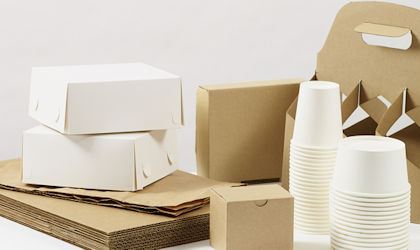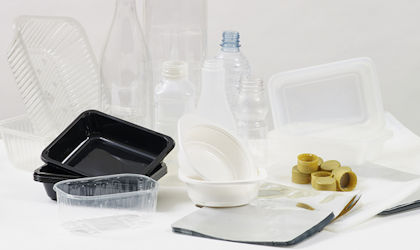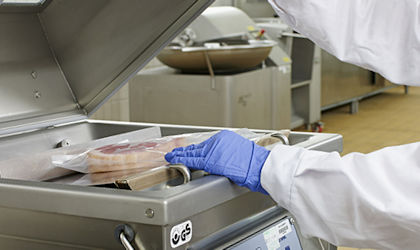Food packaging paper and board testing
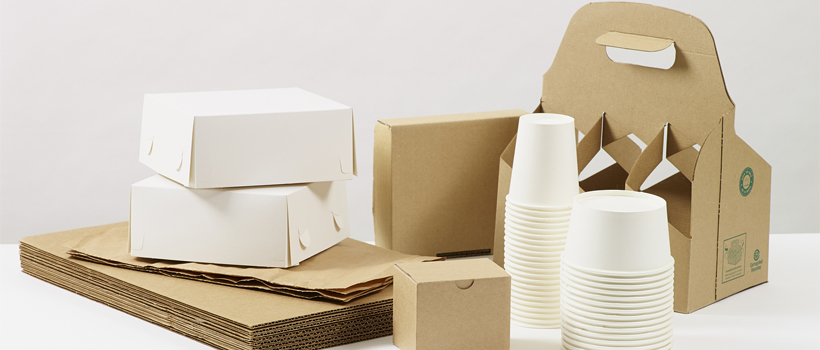
To discuss your needs
Adhesive bond strength testing
Delamination of flexible laminated packaging materials is a common cause of pack failure and print quality issues. Adhesive bond strength testing analyses the adhesive forces required to separate the laminated layers of flexible packaging materials.
Biotest
Biotesting is a form of comparative container integrity testing used particularly during the development and introduction of new or modified forms of containers.
Containers are filled with a microbiological nutrient material and heat processed. The containers are then brought into contact with contaminated cooling water with a known microorganism. Samples are stored and checked for spoilage.
Campden BRI has facilities for packing the containers, processing, storage and microbiological testing.
Cobb test
Hygroscopic materials such as paper and fibreboard attract and hold water molecules from the surrounding environment to varying degrees water absorption is a function of various paper and board characteristics such including porosity as well as additives such as sizing. Testing the ability of paper to resist the penetration of water is conducted using a Cobb test which determines of the quantity of water that can be absorbed by the surface of paper or board over a given time.
Coefficient of friction (CoF)
CoF tests are conducted on plastic films and other materials such as board to determine static and dynamic coefficients of friction - the force required to initiate and maintain motion between two material surfaces. CoF is a fundamental property of all materials which run on high speed printing and packaging lines and is routinely specified in for materials such as plastic films and fibreboard containers. Understanding and controlling CoF gives processors and packers the ability to optimise performance and avoid problems in forming, filling, transporting, and storing of packages. Campden BRI uses a dedicated CoF test rig incorporating a float glass-covered horizontal plane which is attached to a Zwick Z050 materials testing machine to measure both static and dynamic coefficients of friction.
Compression strength testing
The compression strengthof individual primary packaging samples such as cartons, bottles and cans is performed at Campden BRI using a Zwick Z3050 materials testing machine with a 50kN load capacity. Larger transit packaging, including fibreboard cases are also routinely tested for their compression strength.
Conformance to dimensional and material specifications including x-ray and FT-IR measurements
Campden BRI can check the grammage, caliper/ thickness gauge, or other dimensional measurements in accordance with measurement protocols. Measurements can also be conducted using an X-ray Micro-CT Scanner which offers the advantage of being able to measure internal dimensions of packages or components very accurately and non-destructively without the need to open and disturb sealed packs.Rigid or flexible plastic packaging laminates and co-extrusions comprising several layers of different materials can be analysed according to their composition and thickness using Fourier transform infrared spectroscopy (FT-IR), a method of identifying organic materials that utilises each material's unique infra-red energy absorption pattern.
Drop tests
Drop tests can be conducted on packaging in various orientations and from a range of heights to determine its impact strength.
Dye penetration testing
Dye penetration testing can detect leaks in packs down to approx 10 microns and are conducted over a period of 24 hours. These tests are especially effective for testing leaks in the seal area of the pack.
Edge crush
The Edge crush test is used to measure the cross-direction or edgewise compressive strength of a sample of corrugated board. A sample of a carton is placed between two platens and compressed perpendicular to the direction of the flutes. This test gives information on the ability of a particular board construction to resist crushing and provides some relationship with the peak compression strength of empty shipping containers and their stacking strength. If the too board is too weak this may lead to product damage, while board which is too strong results in additional expense that may not be required. Edge crush testing can therefore assist with choosing the correct carton for the job.
Flat crush
Flat crush testing is method used to determine structural properties of board products. It focuses on measuring the crush resistance of corrugated paperboard to flute crushing. The sample is placed between two platens and compressed perpendicular to the direction of the flutes, the force is applied until the fluting collapses. In a similar fashion to edge crush testing, this test determines if the packaging is too weak and may lead to product damage, or too strong and meaning additional unrequired production costs. Flat crush testing can therefore assist with choosing the right material for packing cases.
Flute measurements
Flute measurements can be conducted to determine the classification of corrugated material through varied dimensional measurements. This information can give an indication as to suitability of a material for a variety of packaging uses and can be used to cross check measurements against a materials specification.
Grammage
It is current industry practice to buy and sell paper by mass per unit area, generally in grams per square metre (gsm). Grammage determination allows for checking of the materials properties against a materials specification and that can be related back to the materials key performance properties such as strength.
Kit testing
The Kit test is used to quantify or compare the performance of papers and boards, used for food contact and other packaging applications where resistance to grease staining is important. The test measures the degree of repellence or anti-wicking of paper and boards which have been treated with fluorochemical sizing agents used to prevent wetting of the cellulose fibres of the material. Test solutions with varying strengths of castor oil, toluene, heptane and turpentine are used. The highest numbered solution (the most aggressive) that remains on the surface of the paper without causing failure is reported as the "kit rating".
Mullen burst
For pulp and paper products, the Mullen burst test is used to measure the material's physical strength and fibre bond. The Mullen burst test is a measure of the force required to rupture or puncture corrugated board. This force is indirectly related to the board’s ability to withstand internal and external forces and protect its contents during storage and distribution. If the too board is too weak this may lead to product damage, while board which is too strong results in additional expense that may not be required. Mullen burst testing can therefore assist with choosing the correct carton for the job.
Peel testing
Seals are vital to many types of food packaging; however, the role of the seal will differ from one product to another. Depending on the type of package, it may need to have mechanical strength or hermetic integrity, or be easy to open. So, the amount of force required to peel a lidding material from a pack must balance the importance of seal integrity against the requirement of convenience for consumers wishing to open the packs. When designing new pack formats during product development, it is particularly important to keep food safety/integrity in mind. It is also vital to know how seal strength may alter over time or during/after distribution. At Campden BRI, as part of our package testing services, we have the equipment to measure the peel strength of a range of pack formats. The equipment is capable of running at different angles and speeds during a test cycle.
Tear resistance
Tear resistance testing can be conducted on sheet and film materials to measure the force perpendicular to the plane of the sheet required to tear single or multiple plies through a specified distance after tear initiation. A Zwick Z050 materials testing machine is used for this test and the results are stated in mN/ply.
Key services
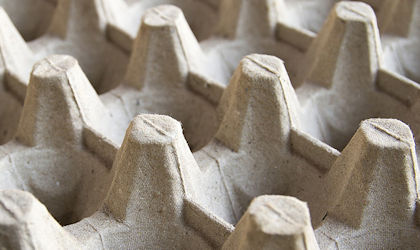
Package strength and integrity
Packaging must be able to withstand the rigours of distribution and storage.
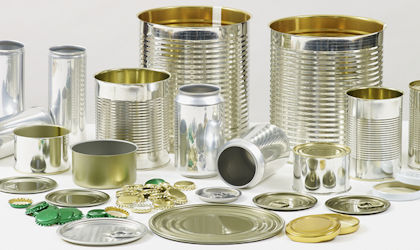
Metal
Testing of canned products within metal packaging may be required for various reasons including product/pack compatibility.
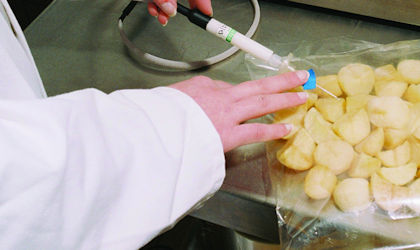
Modified atmosphere packaging
Ensuring the correct gas composition and gas:product volume ratio is critical.

Packaging down the microscope
Microscopy can use a range of techniques to examine packaging materials including plastic and metal.

Packaging migration and taint analysis
Packaging must not transfer its constituents into food to the detriment of the food's quality.
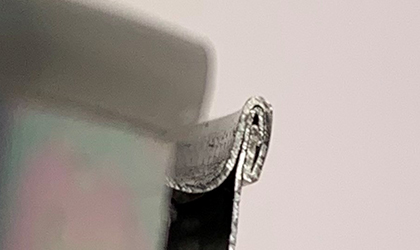
Metal can double seam assessment and troubleshooting
We can assess internal and external dimensions for any defects and breaching of critical seam parameters
Packaging training courses
Explore our packaging related courses including; Packaging technology for non-packaging technologists and MAP (modified atmosphere packaging) – an introduction
Are you getting the most from your Membership?
Watch our membership FAQ videos and find out more about Member Service Account spending, Member Interest Groups, help and advice
Where we refer to UKAS Accreditation
The Campden BRI group companies listed below are accredited in accordance with the recognised International Standard ISO/IEC 17025:2017 by the United Kingdom Accreditation Service (UKAS). The accreditation demonstrates technical competence for a defined scope of methods, specific to each site, as detailed in the schedules of accreditation bearing the testing laboratory number. The schedules may be revised from time to time and reissued by UKAS. The most recent issue of the schedules are available from the UKAS website www.ukas.com. Campden BRI (Chipping Campden) Limited is a UKAS accredited testing laboratory No. 1079


